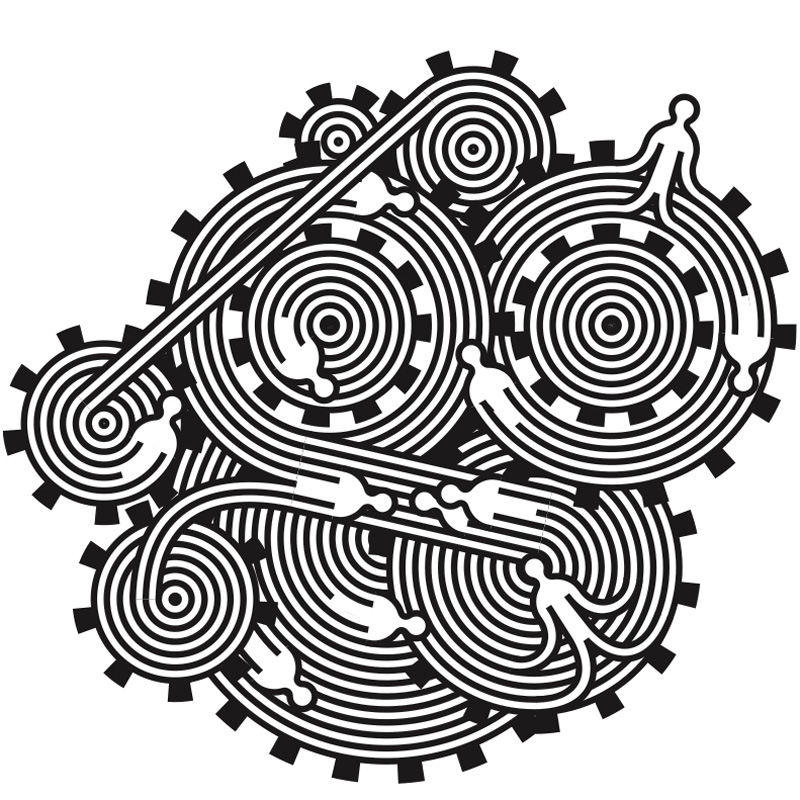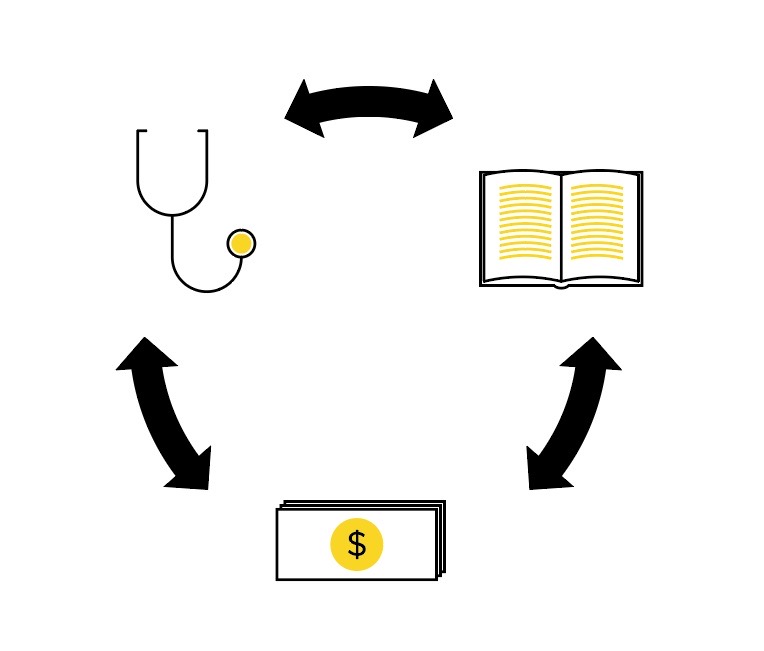Difference between revisions of "Power structure insight"
m |
m |
||
| Line 1: | Line 1: | ||
| − | <div class="page-header" ><h1>Five Insights: | + | <div class="page-header" ><h1>Five Insights: Power Structure</h1></div> |
| − | + | When we begin to use knowledge to show us what we don't see, so that we may see a theme or an issue as a whole, a vision of a world on the brink of change results; and of a whole new order of things, which is ready to emerge. We call the emerging order of things the [[holotopia|<em>holotopia</em>]]. The [[five insights|<em>five insights</em>]] are selected as sufficient to see the [[holotopia|<em>holotopia</em>]]. | |
| + | |||
| + | <p>The Power Structure insight, which is introduced here, is really a combination of three closely related insights.</p> | ||
<div class="row"> | <div class="row"> | ||
| − | <div class="col-md-3"><h4> | + | <div class="col-md-3"><h4>Insight 1</h4></div> |
<div class="col-md-7"> | <div class="col-md-7"> | ||
[[File:System.jpeg]] | [[File:System.jpeg]] | ||
| − | |||
| − | |||
| − | |||
| − | |||
| − | |||
| − | < | + | <p>"The whole" here – as illustrated in the above [[ideogram|<em>ideogram</em>]] – is the <em>socio</em>-technical systems we are part of.</p> |
| − | + | <p>A century ago the human creativity, or innovation, was focused on constructing machines. We now expand our vision, and focus our actin, on those much larger 'machines' – the socio-technical systems. We see the tools ... And to the possibility to innovate on <em>that</em> scale. The effects (radical improvements in effectiveness and efficiency of human work) are likely to be comparable or larger.</p> | |
| − | + | <p>Think of them as super-mechanisms, which take our daily work as input, and produce ... output. If the effect is problems not solutions – should we not...</p> | |
| − | + | <p>We considered calling this insight "The systems, stupid!", which is a paraphrase of Bill Clinton's 1992 successful presidential campaign slogan, "The economy, stupid!". It's <em>not</em> the economy. It's the <em>systems</em>! Once this is understood, the old political agendas fade into oblivion – and completely new ones emerge and come to the forefront. This insight suggests why the <em>holotopia</em> is "the new red"...</p> | |
| − | |||
| − | |||
| − | |||
| − | |||
| − | |||
| − | |||
| − | <p>A century ago the human creativity, or innovation, was focused on constructing machines. We now expand our vision, and focus our actin, on those much larger 'machines' – the socio-technical systems. And to the possibility to innovate on <em>that</em> scale. The effects (radical improvements in effectiveness and efficiency of human work) are likely to be comparable or larger.</p> | ||
</div></div> | </div></div> | ||
| Line 38: | Line 28: | ||
<div class="col-md-3"><h4>Insight 3</h4></div> | <div class="col-md-3"><h4>Insight 3</h4></div> | ||
<div class="col-md-7"> | <div class="col-md-7"> | ||
| + | |||
| + | XXXXXXX | ||
<p>The third insight is about the evolution of our institutions or socio-technical systems, or <em>power structures</em>: When guided by <em>egocenteredness</em>, or the "free competition", the <em>power structures</em> tend to evolve pathologically, as socio-cultural cancer...</p> | <p>The third insight is about the evolution of our institutions or socio-technical systems, or <em>power structures</em>: When guided by <em>egocenteredness</em>, or the "free competition", the <em>power structures</em> tend to evolve pathologically, as socio-cultural cancer...</p> | ||
<p>The remedy here is [[systemic innovation|<em>systemic innovation</em>]] – to innovate on the level of systems.</p> | <p>The remedy here is [[systemic innovation|<em>systemic innovation</em>]] – to innovate on the level of systems.</p> | ||
| Line 47: | Line 39: | ||
<div class="col-md-7"> | <div class="col-md-7"> | ||
<p>A radical change of action follows: We CANNOT solve our problems by working within the systems that created them. </p> | <p>A radical change of action follows: We CANNOT solve our problems by working within the systems that created them. </p> | ||
| − | + | ||
</div></div> | </div></div> | ||
| Line 223: | Line 215: | ||
</div> | </div> | ||
</div> | </div> | ||
| + | |||
| + | <!-- CLIPS | ||
| + | |||
| + | <div class="row"> | ||
| + | <div class="col-md-3"><h4>Ideogram</h4></div> | ||
| + | <div class="col-md-7"> | ||
| + | |||
| + | <p> | ||
| + | This <em>ideogram</em>, which is different from the Power Structure <em>ideogram</em>, is expected to suggest the way of looking that makes all the difference – seeing the socio-cultural systems. | ||
| + | </p> | ||
| + | </div> | ||
| + | </div> | ||
| + | |||
| + | <div class="row"> | ||
| + | <div class="col-md-3"><h4>Intuitive idea</h4></div> | ||
| + | <div class="col-md-7"> | ||
| + | <p>Switching the way of looking from problems to systems removes their "wickedness". Turns impotence into opportunity. A <em>wonderful</em> field of action opens up. This is <em>holotopia</em>'s empowerment in a nutshell.</p> | ||
| + | </div></div> | ||
Revision as of 13:22, 26 February 2020
Contents
Five Insights: Power Structure
When we begin to use knowledge to show us what we don't see, so that we may see a theme or an issue as a whole, a vision of a world on the brink of change results; and of a whole new order of things, which is ready to emerge. We call the emerging order of things the holotopia. The five insights are selected as sufficient to see the holotopia.
The Power Structure insight, which is introduced here, is really a combination of three closely related insights.
Insight 1
"The whole" here – as illustrated in the above ideogram – is the socio-technical systems we are part of.
A century ago the human creativity, or innovation, was focused on constructing machines. We now expand our vision, and focus our actin, on those much larger 'machines' – the socio-technical systems. We see the tools ... And to the possibility to innovate on that scale. The effects (radical improvements in effectiveness and efficiency of human work) are likely to be comparable or larger.
Think of them as super-mechanisms, which take our daily work as input, and produce ... output. If the effect is problems not solutions – should we not...
We considered calling this insight "The systems, stupid!", which is a paraphrase of Bill Clinton's 1992 successful presidential campaign slogan, "The economy, stupid!". It's not the economy. It's the systems! Once this is understood, the old political agendas fade into oblivion – and completely new ones emerge and come to the forefront. This insight suggests why the holotopia is "the new red"...
Insight 2
The second insight, rendered by the power structure keyword and ideogram is that the power structure should best be considered as combining power interests with our ideas and with our own condition of wholeness. The point is that the power interests can modify both.
Our society is lacking headlights, and steering and braking controls. Democracy is not possible!
Insight 3
XXXXXXX
The third insight is about the evolution of our institutions or socio-technical systems, or power structures: When guided by egocenteredness, or the "free competition", the power structures tend to evolve pathologically, as socio-cultural cancer...
The remedy here is systemic innovation – to innovate on the level of systems.
Imagine a bus without steering and braking controls, and with candle headlights. That's our democracy...
Consequence 1
A radical change of action follows: We CANNOT solve our problems by working within the systems that created them.
Consequence 2
The enemy is us.
The enemy is the system – which is us! There is nobody to blame. Re-evolution is the way.
Formulation
Text
Story
The story here is about Erich Jantsch, in the context of the Club of Rome's quest for the solutionatique. Norbert Wiener comes in first, to put the ball in play. Yes, our system lacks feedback, and steering. "The headlights are dim, and the steering and braking controls are dysfunctional", observed Engelbart. Jantsch then organized a team in Bellagio...
Action
Systemic innovation. We must first of all develop the CAPABILITY to innovate systems. Knowledge must result in systemic action. THEN we'll have "democracy".
Keywords
Prototypes
The GcG and The CoZ
- Back to five insights.


